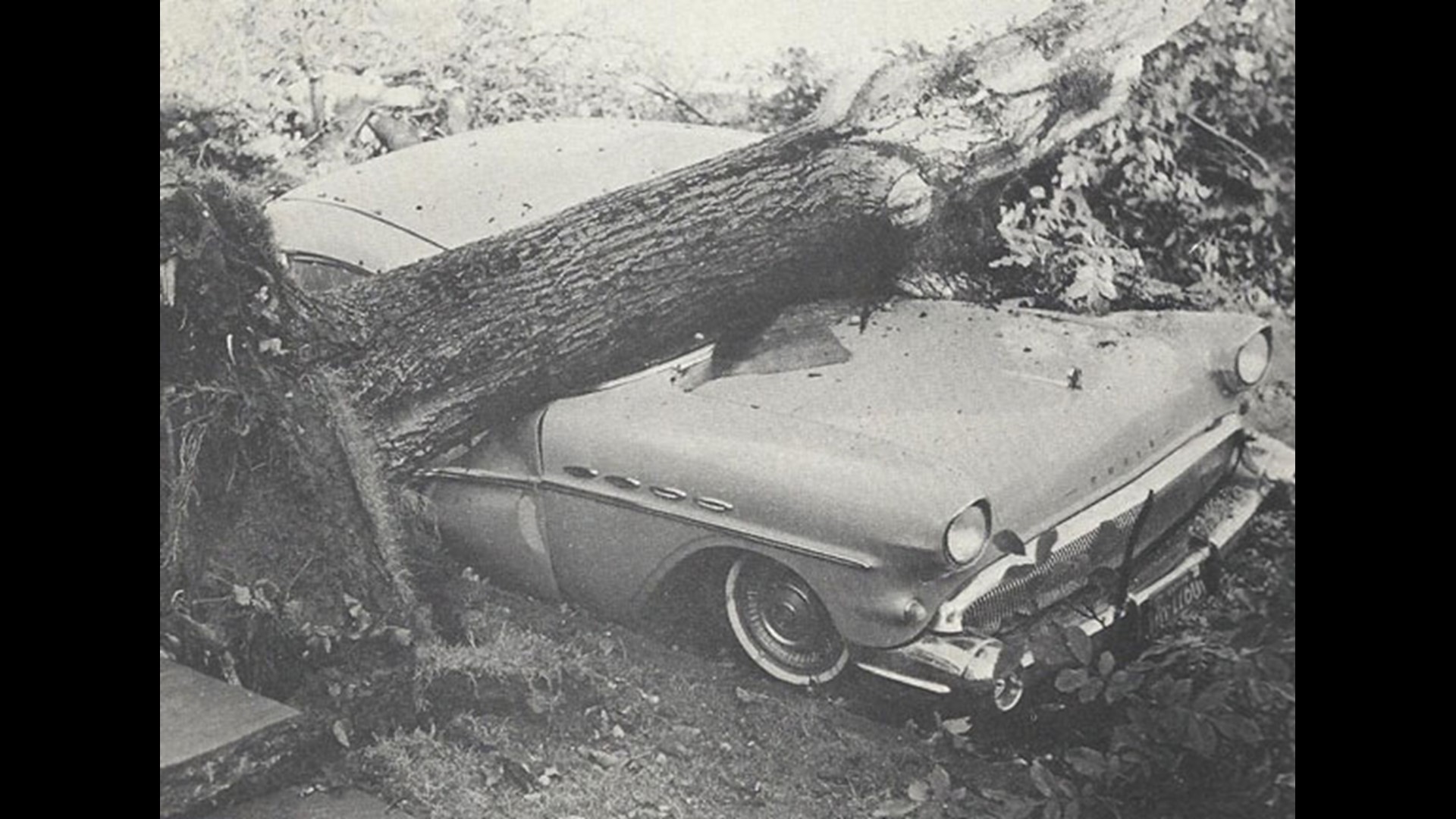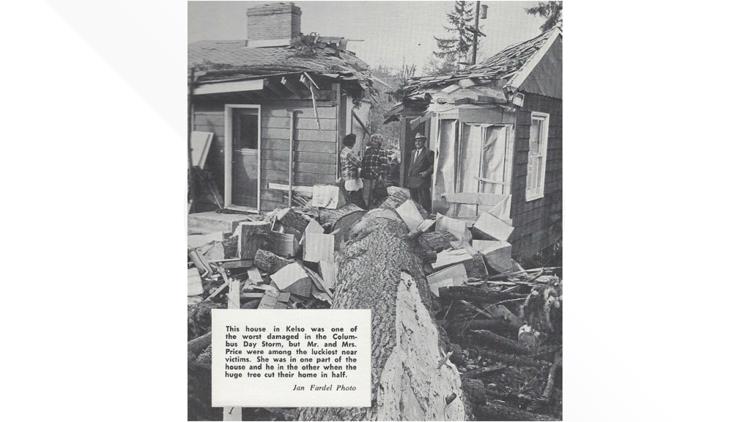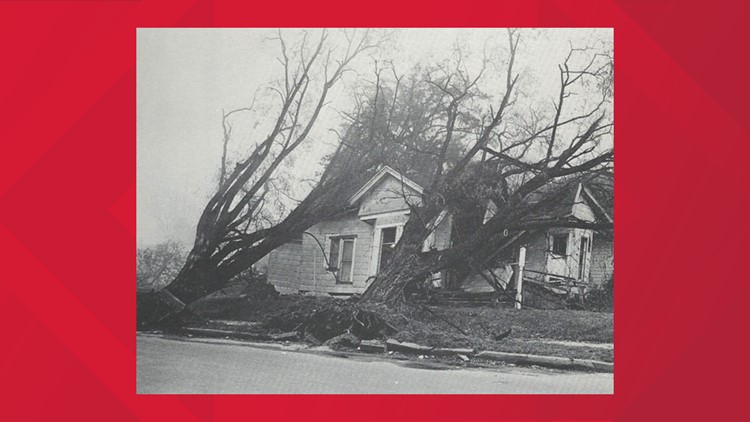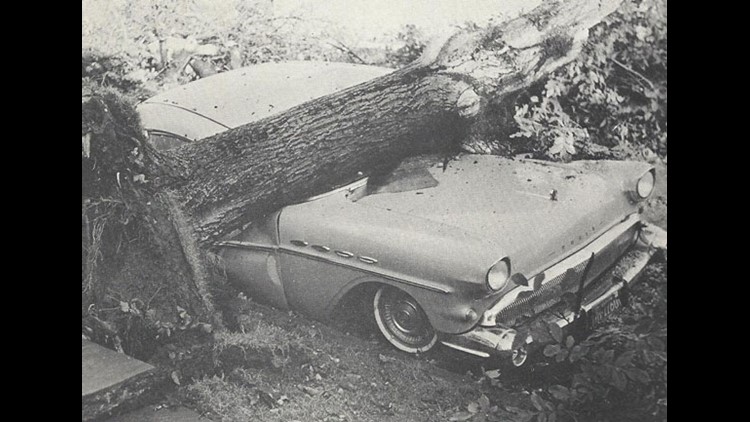SEATTLE — The Pacific Northwest is no stranger to windstorms but the 1962 Columbus Day Storm was one for the record books and one that will never be forgotten by those who lived through it.
The 60th Anniversary of the Columbus Day Storm
The 1962 Columbus Day Storm was one of the strongest storms to ever hit the Pacific Northwest. Monday, Oct. 10, marks its 60th anniversary.
KING 5 is referring to the event as the Columbus Day Storm because the name was coined in the 1960s. That holiday is now federally recognized as Indigenous Peoples' Day.
On the 50th anniversary, KING 5 produced this special that looks back at that day and how forecasting technology has changed since then.
Part 1
Part 2
Part 3
Part 4
According to Dr. Cliff Mass, a professor in the Department of Atmospheric Sciences at the University of Washington, this was the worst storm to impact Washington in a century.
Hurricane-force winds blasted parts of the Pacific Northwest from British Columbia to California with the most severe impacts being felt in western Washington and western Oregon.
This is where winds were sustained over 100 mph, gusting upwards of 150 mph, destroying homes and claiming lives becoming a one-in-100 years magnitude storm according to Mass.

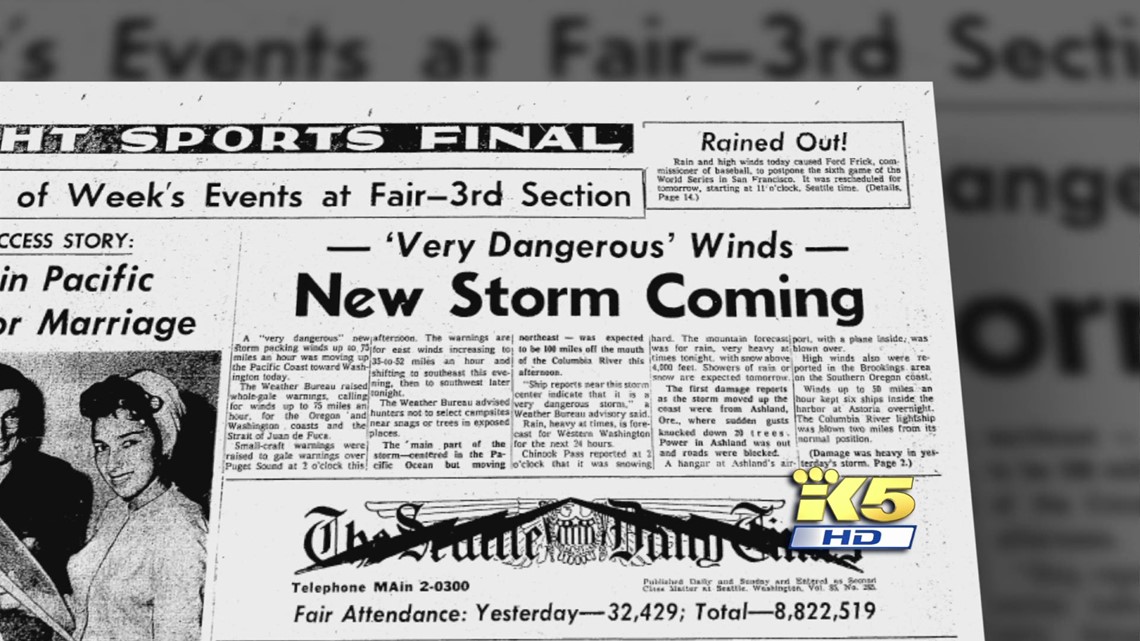
The birth of the storm
The storm originated in the western Pacific as a tropical disturbance during late September of 1962 becoming Typhoon Freda on Oct. 3, quickly undergoing organization and intensification. As Freda raced northeast across the Pacific, it lost its energy source of the warm waters, encountering cooler waters farther northeast in the Pacific.
This transitioned the typhoon into an extratropical, midlatitude cyclone.

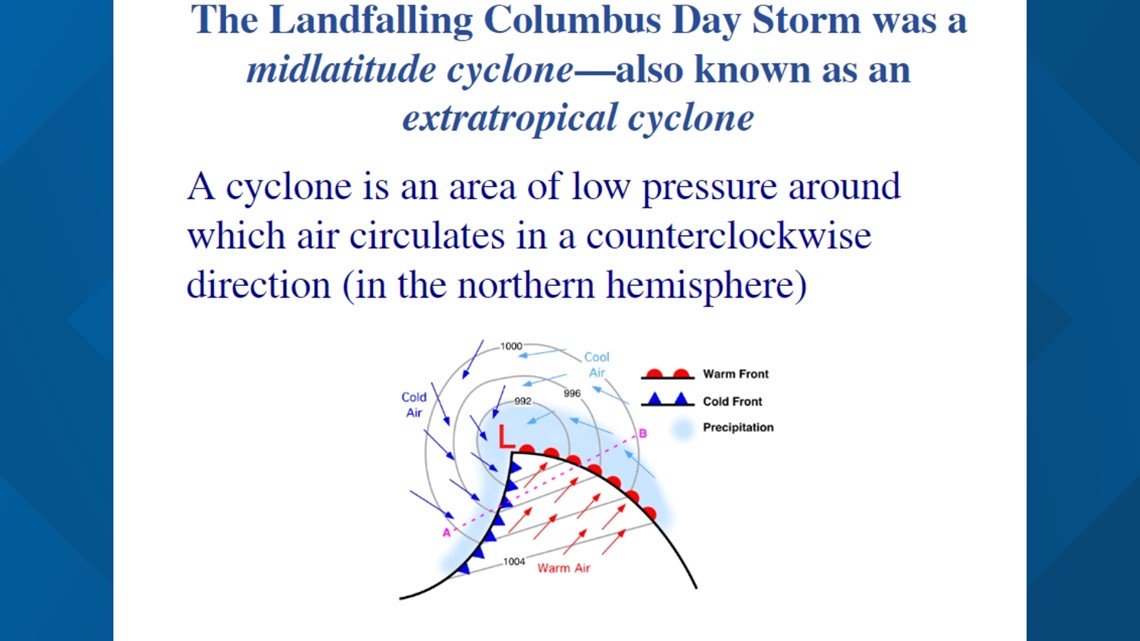
During the transition from a tropical system into a hybrid storm, it managed to maintain a shell of its low-level circulation. This allowed the system to rapidly intensify as it moved into an environment favorable for the deepening or intensifying of midlatitude cyclones.
A dip in the jet stream, or a trough, over the Pacific with a strong temperature gradient, temperatures going from warm to cool quickly over short distance, the Columbus Day storm blossomed off the coast of northern California. The storm continued to grow and gain strength as it moved northward just off the coast of Oregon and Washington.
Mass says the tropical origin, optimal time of the year, and forcing ingredients coming together helped spawn such a strong storm, setting it apart from the typical windstorms the Pacific Northwest is accustomed to.
The pressure within the storm dropped down to 955 mb. This is quite low for a midlatitude cyclone. In fact, a pressure this low is comparable to the pressure associated with a category 3 hurricane.
Category 3 hurricanes can have maximum sustained winds upwards of 130 mph.

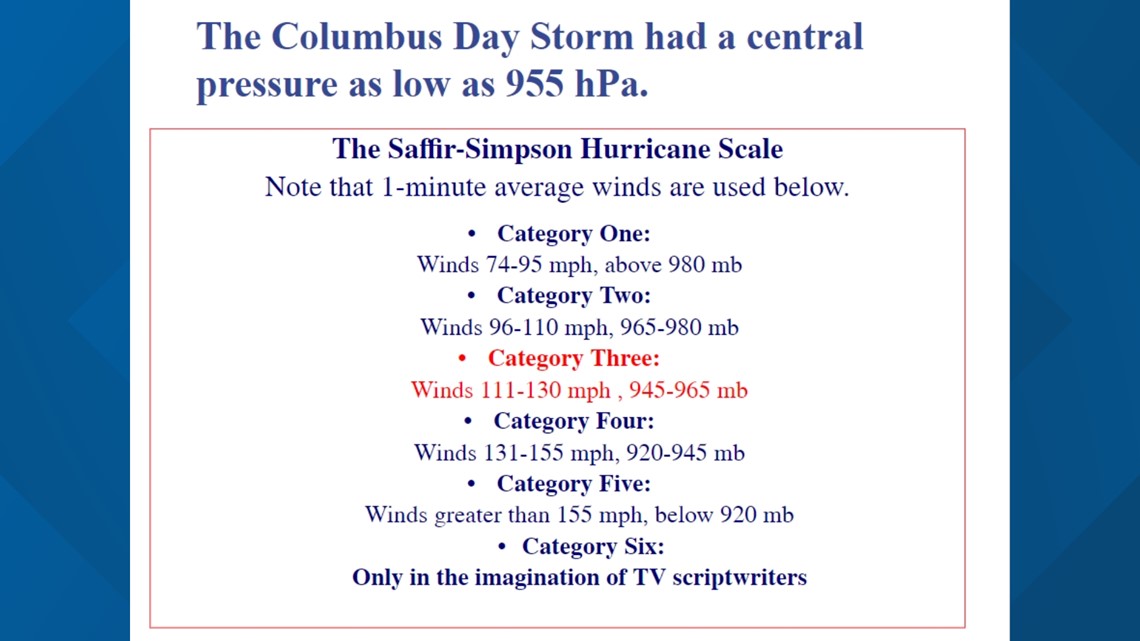
When the pressure of a storm drops this low, it indicates the intensity of the storm. The lower the pressure, the stronger the storm.
On Oct. 12, 1962, the storm skirted the coast and caused massive damage.
The winds with the storm
The wind gusts were extreme with the storm, gusting up to hurricane-force for the entire coast of Washington. Even 100 mph wind gusts were reported inland near the Puget Sound area, not too far from Seattle.

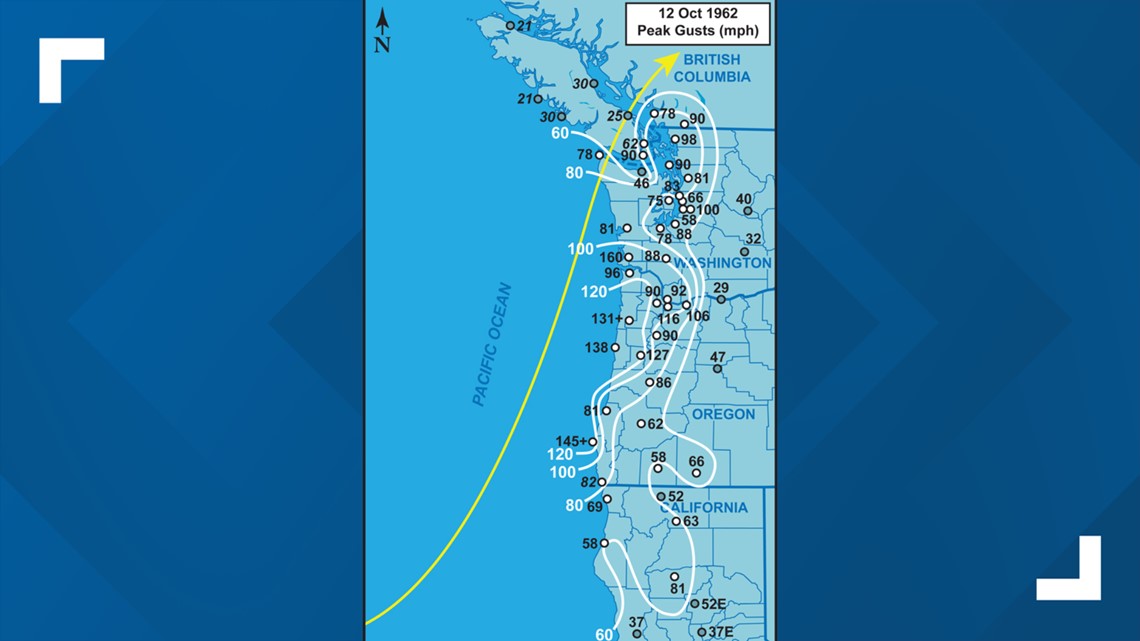
Mass said North Head, Washington saw sustained winds reach 126 mph with gusts up to 150 mph before the sensor failed.
Take a look at some of the strongest wind gusts recorded in western Washington.
- North Head: 150 mph
- Tatoosh Island: 110 mph
- Renton: 100 mph
- Bellingham: 98 mph
- Vancouver: 92 mph
- Tacoma: 88 mph
- Everett: 81 mph
- Hoquiam: 81 mph
- Olympia: 78 mph
- Seattle: 66 mph
The aftermath of the Storm
The event went down as a historic windstorm that was one for the record books for the Pacific Northwest.
Damage caused by 1962 Columbus Day Storm
The wind toppled trees, destroyed homes and left areas without power for weeks. Estimated damages were $230-280 million in property across Washington, Oregon, British Columbia, and California. The estimated damage approached $1 billion when factoring in the loss of timber in the region. Forty-seven people were killed by the windstorm.
As we approach the 60th anniversary, it is important to remember that intense windstorms similar to this magnitude can and do occur in western Washington. It's important to be prepared for when the next big storm system arrives.
Mass said it's not a matter of if, but when the next storm of this magnitude impacts western Washington.

